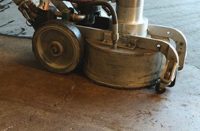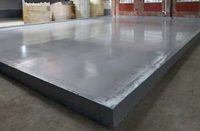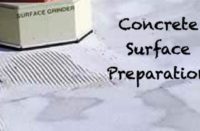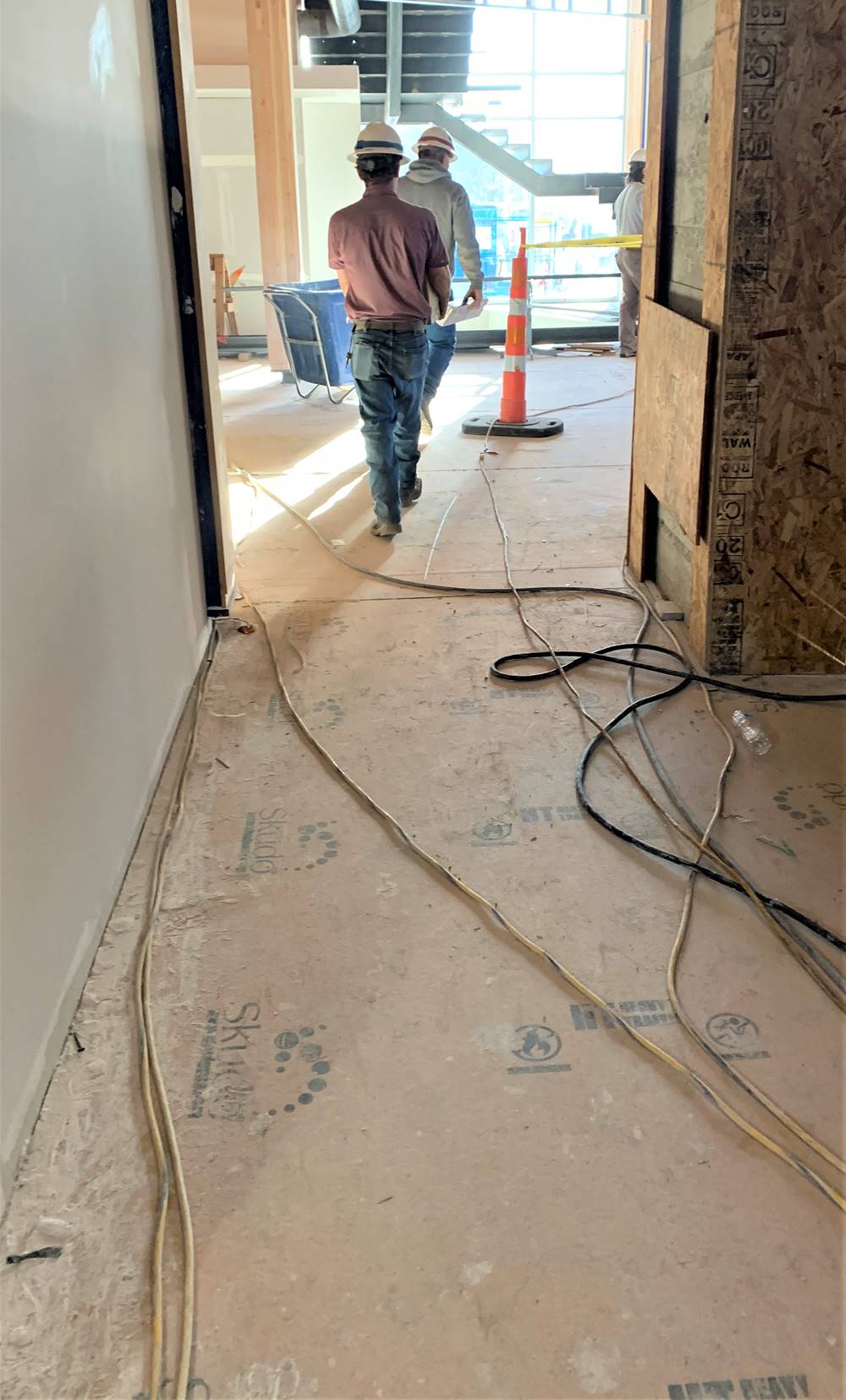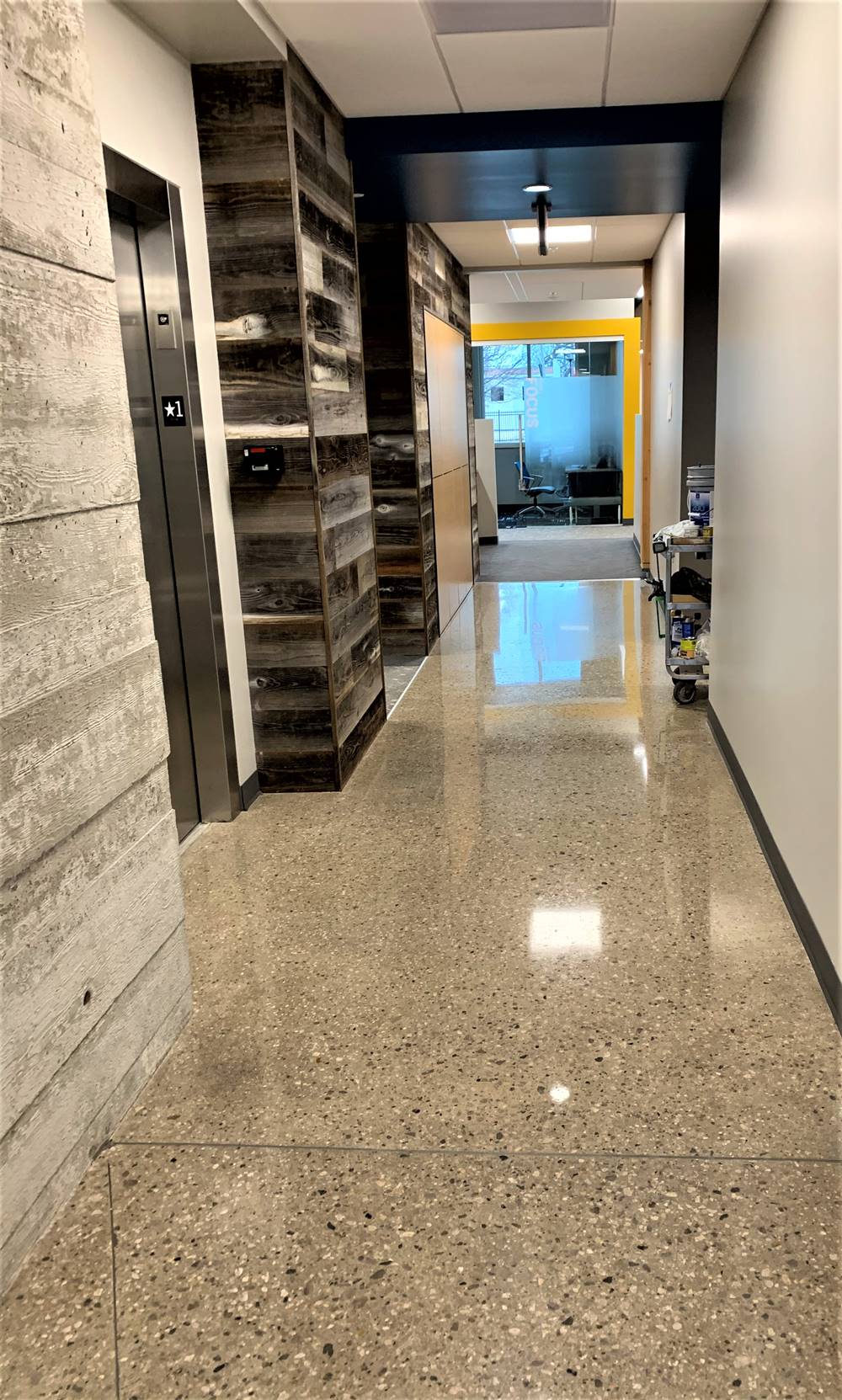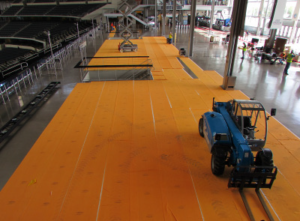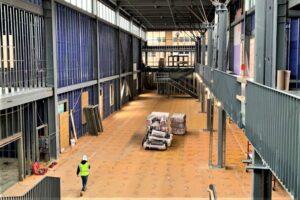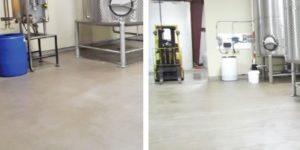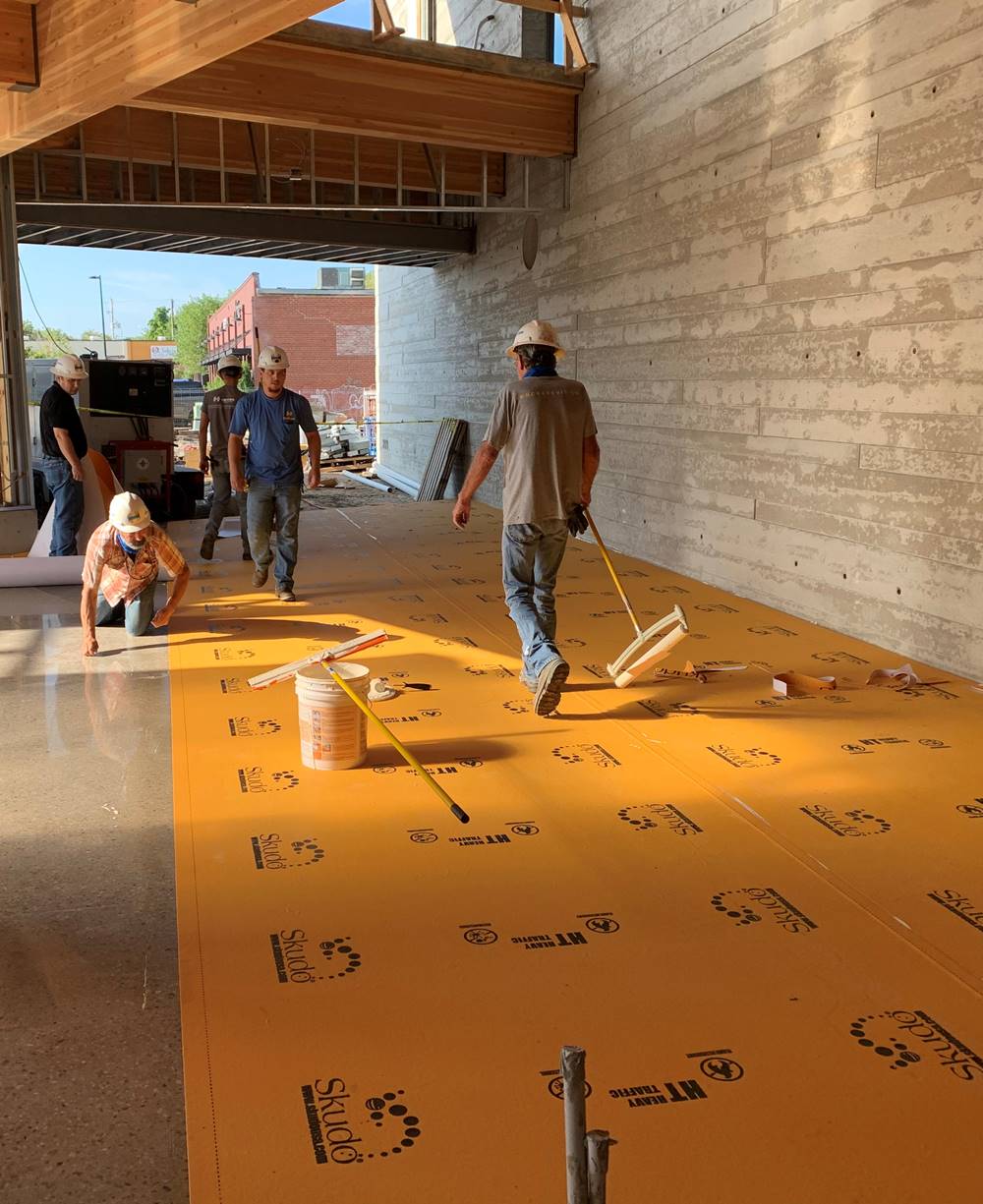
When Hutton, a large design-build firm based in Wichita, Kansas, outgrew its headquarters, owner Ben Hutton naturally turned to his own resources. He called on Hutton’s in-house architecture and design team to draw up plans for a new facility. In addition, he knew he needed some commercial protection systems in place to protect the polished concrete floors.
“Our team designed the 26,000-square-foot building to be an educational showpiece for clients,” says Jennifer Szambecki, Hutton’s director of marketing. It also serves as a recruitment and retention tool for Hutton’s 300 employees across four offices.
When it came to materials, “The Hutton team intentionally chose the material palette to be concrete, wood and steel. Architects wanted to display the unique and inherent beauty of each one,” she says.
Protecting the polish
“We chose polished concrete for our more public areas,” says in-house architect Matt Byrum. “Partly because it holds up to wear-and-tear so well, but also because of the aesthetic. The exposed aggregate is beautiful.” Not to mention, he adds, it’s durable and easy to clean.
“With the polished concrete, we knew we needed to protect the floor for an extended length of time while we completed the building around it,” says Derek Pyeatt, project superintendent for Hutton. The firm, which focuses on professionalism and attention to detail, believes quality surface protection is worth the investment.
“We have used other products in the past. However, there’s nothing comparable to what the Skudo products offer,” says Pyeatt, referring to the company’s temporary commercial protection systems.
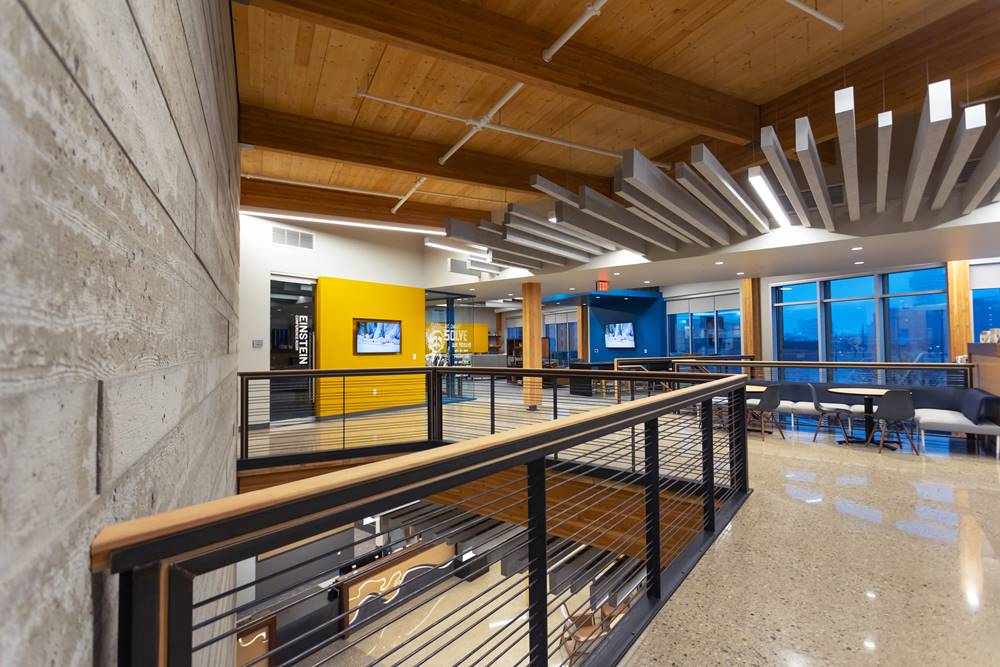
On guard
The Skudo Commercial System consists of a water-based liquid base coat covered with a coated mat that’s rolled out and pressed into the wet base coat. The mat comes in two grades. Hutton used the Heavy Traffic (HT), for both external and internal use, on its project. Medium Traffic (MT) is made for interior installations only. Both protect surfaces from damage during construction. They also guard against spills.
Installers press the mat into the wet base coat to create a sealed, heavy-duty, slip-resistant barrier. Skudo designed it to firmly adhere to the surface to keep out dirt and debris. Together, the coating and mat guard against damage from machinery, scaffolding and shoring, foot traffic, dropped items, mold and rust. The system also keeps out liquids from everything from water and coffee to paint and mild solvents.
The HT system also guards against sparks and fire, as well as UV exposure.
When installed properly, it greatly reduces the risks of someone tripping or slipping. The surface protection system doesn’t move with construction activity or high winds. It also has achieved the highest slip rating in both wet and dry conditions in laboratory tests.
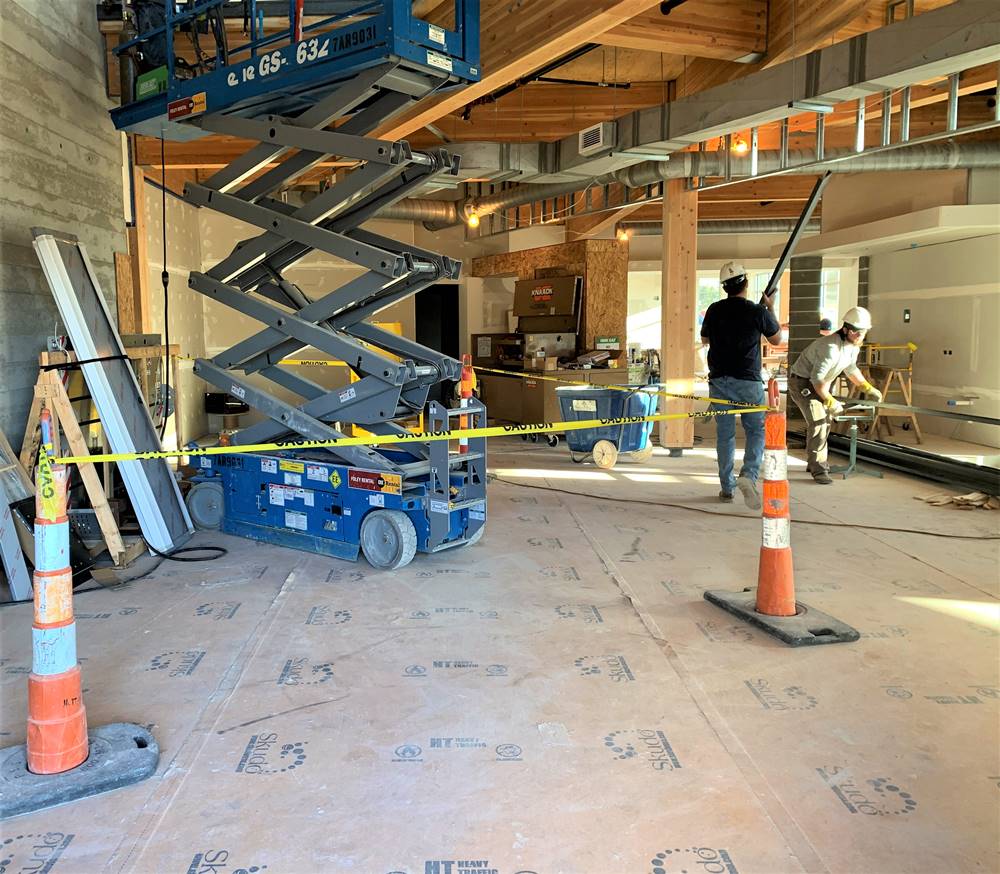
Protection for months
Superior Building Services out of Wichita, the concrete polishing subcontractor, began grinding the concrete 30 days after the slabs were placed, says company manager Claira Thibault. All totaled, the company burnished 3,000 square feet of concrete at the first-floor entryway and the second-floor cafeteria area.
“After the majority of the grinding was done, we densified the slab and put down the Skudo (system),” she says. It remained in place for about four months. The HT system can remain in place on interior or exterior projects for up to 12 months. The interior-use-only MT System can offer protection for up to nine.
If the floor is exposed to other trades during construction, using Skudo is mandatory, which is fine by her. “I think it’s the best product I’ve ever seen for floor protection,” Thibault says.
No cleaning afterward
For the Hutton project, a four-to-five-person crew took no more than six hours to install the Skudo Commercial System in the two areas.
“I was very surprised by the ease of installation,” Pyeatt says. “After some initial training with Daniel Osden (his Skudo rep), my crew took off. The (coating) application, rolling/cutting the product, and pressing the mat into the base coat was a very simple process.”
When the time came for removal, he says the commercial protection systems peeled right up and didn’t leave any residue.
Pyeatt likened the removal process to pulling glued-down carpet. “We used carpet pullers and cut it into manageable pieces instead of trying to take it up as a whole.” Whereas they did have to spot clean some base coating, he continues, it came right off with a little rubbing. Once it was gone, “There was no additional mess to clean up.”
That’s one of the many benefits of using the Skudo Commercial System. When a crew pulls up the mat, it removes any dirt or debris that may have been on the surface when installed. No need to sweep or spray afterwards.
Beaming with pride
For its new headquarters, Hutton built the first of its kind mass timber structural framing in Kansas, Pyeatt says. Specifically, he explains, the building consists of mass timber columns, beams and structural decking.
“The product as installed was also the finished product we intended to keep exposed in the end,” he says. To avoid damage to the wood timbers, Hutton again turned to Skudo.
“We decided to use Skudo’s Column Guard system to protect the timber columns and it worked great. It was easy to install and allowed for easy removal and reapplication as necessary in the ever-changing building,” he says.
Skudo specifically designed its Column Guard to protect columns and pillars during construction. Basically, it’s a heavy-duty, synthetic, flexible version of the company’s SkudoBoard product line. Its textured surface protects columns from damage and also resists water. Skudo made the product so installers could use it again and again.
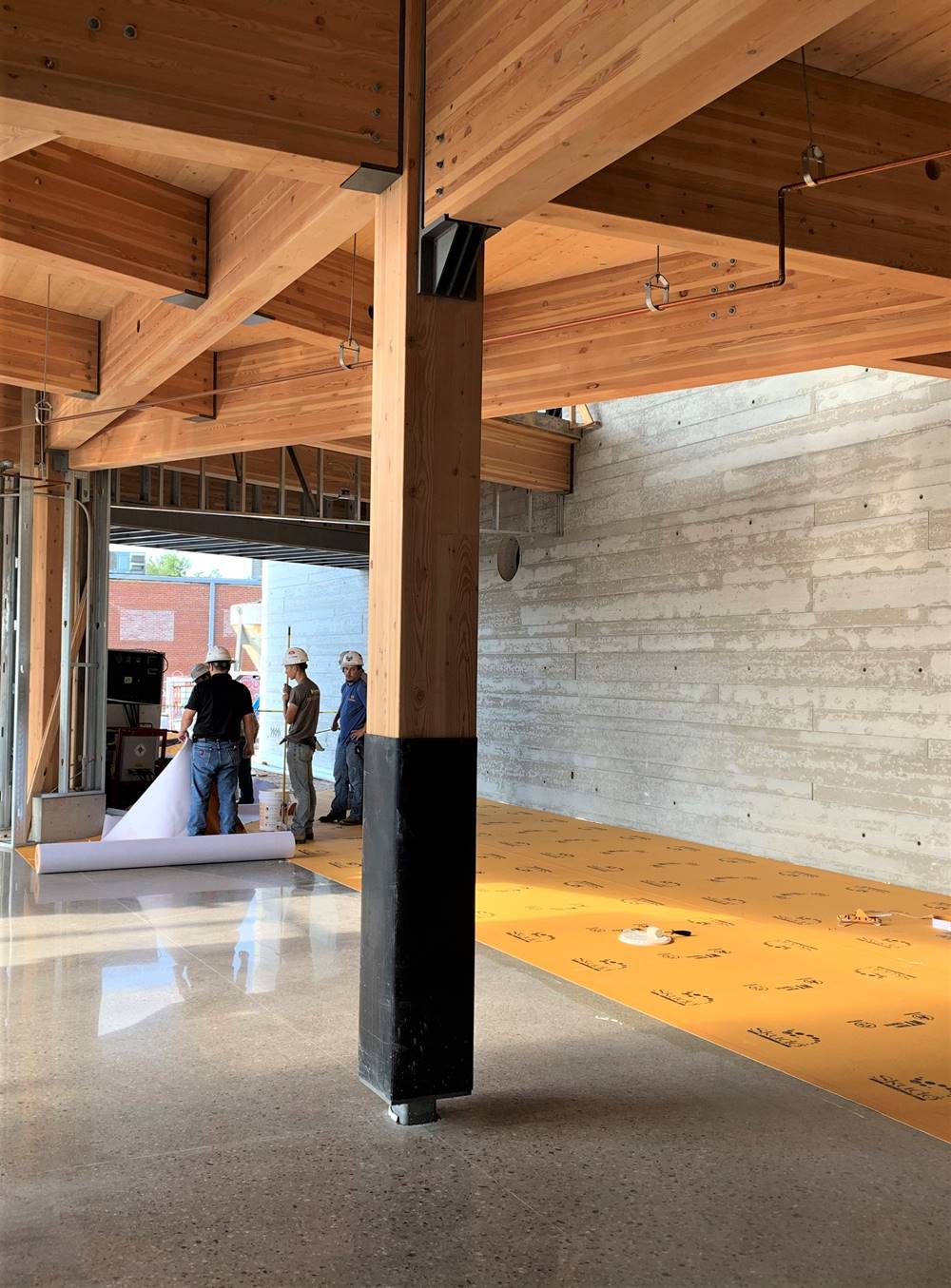
Overall, Pyeatt says, dealing with Skudo was great. “From the beginning to the end, Daniel Osden was very intentional in helping our company get the right product for our needs,” he says. “He made sure our application was going to provide the finished product we designed. Skudo’s innovation in the temporary protection market for construction goes unmatched.”
